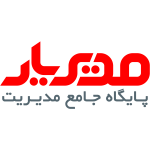نویسنده: مهدی یاراحمدی خراسانی
فرهنگ و چند فرهنگ گرايی
فرهنگ سازماني
درسازمان رويدادهايي بيش از توليد و عرضه محصولات و خدمات جديد و طي سلسله مراتب اختيارات يا کسب قدرت رخ مي دهد . پژوهشگراني که در صدد درک سازمانهايي که در ايالات متحده آمريکا مستقر نبودند بر مي آمدند و بر اساس مفروضات و اصول متفاوتي عمل مي کردند ، خواستند براي درک برخي از اين تفاوتهاي اصولي ، از مفهوم فرهنگ ناشي از مردم شناسي استفاده کنند.
نخستين سالهاي دهه 1980 ، اين نوع مفروضات فکر پژوهشگران را به خود مشغول داشت و آنها به اين فکر افتادند که چگونه امکان دارد شيوه متفاوتي از سازمان دهي يک شرکت مي تواند موفق باشد ، حال آنکه با توجه به تمام “دانشي” که درباره سازمان داشتند چنين ديدگاهي تاييد نمي شد. براي برخي ها چنين به نظر مي رسيد که بايد پاسخ را در مفهوم فرهنگ جست و جو کرد.در واقع وجود يک فرهنگ سازماني قوي و بسيار مشهور مي تواند عاملي براي موفقيت شرکت هايي چون جنرال الکتريک ، جانسون اند جانسون و پروکتراندگمبل باشد. برعکس، يک فرهنگ بسيار قوي و بدون تغيير به عنوان پديده اي شناخته شده است که موجب بروز مشکلات و دردسرهايي در شرکت هايي مانند جنرال الکتريک و آي.بي.ام شده است.
ادگار شين فرهنگ را بدين گونه تعريف کرده است:
الگويي از مفروضات مشترک اصلي که يک گروه هنگام حل کردن مسائل مربوط به سازشکاري با عوامل خارجي و يکپارچگي داخلي مي آموزد و اين مفروضات توانسته است کارساز واقع شود و از اعتبار لازم برخوردار گردد.از اينرو شايسته است به اعضاي جديد آموزش داد يا به آنها تلقين کردکه پنداشتها و انديشه هاي خود را بر اساس چنين مطلوبي بگذارند
بنابراين ، فرهنگ شيوه اي است که سازمان براي دست يازيدن به عوامل محيطي خود مي آموزد.
سه رکن اصلي فرهن
_آثار فرهنگ
_ارزش هاي پذيرفته(تثبيت) شد
_مفروضات اصلي
فرهنگ سازماني و عملکرد
_فرهنگ سازماني چارچوبي است که براي کارکنان و مديران رفتار و شيوه تصميم گيري روزانه را مشخص مي نمايد و آنها بايد با تکيه بر اين رهنمودها در صدد تامين هدف هاي سازمان برآيند.در واقع، فرهنگ چيزي است که هدف سازماني ار آن نشات مي گيرد و بدان وسيله تعيين مي گردد
_تحقيق کاتر و هسک
_پژوهشگران دانشکده هاروارد ،جان کاتر و جيمز هسکت کوشيدند مشخص نمايند که براي موفقيت سازمان چه عواملي مي توانند برخي از فرهنگ هاي سازماني را ( نسبت به بقيه ) موفق تر نمايند
_کاتر و هسکت دو سطح از فرهنگ را شناسايي کردند ،يک دسته به چشم مي آيد وقابل ديدن است و دسته ديگر به چشم نمي آيد و قابل ديدن نيست
_اين تحقيق به چهار نتيجه عمده انجاميد
_فرهنگ سازماني مي تواند در بلند مدت بر عملکرد اقتصادي اثري شگرف بگذارد
_به احتمال زياد، در دهه آينده فرهنگ سازماني مي تواند نقشي عمده در تعيين موفقيت يا شرکت سازمانها ايفا نمايند
_موارد زيادي مشاهده مي شود که فرهنگ هاي سازماني مانع از اين مي شوند که شرکت در بلند مدت عملکرد مالي خوبي داشته باشد
_اگر چه ايجاد چنين تغييري چندان آسان نيست،ولي مي توان در سازمان ها فرهنگ هايي را به وجود آورد که عملکرد بهبود يابد.
پذيرفتن مسئوليتهاي ناشي از فرهنگ سازماني
_در بسياري از شرکت ها مديران کوشيده اند مسئوليت فرهنگ سازماني را بپذيرند و هدايت يا رهبري آن را بعهده بگيرند
_کاتر و هسکت مدعي هستند که براي ايجاد تغيير موفقيت آميز در فرهنگ سازماني رهبران ارشد نقش عمده دارند.
نقش آموزش و مشارکت
_هنگامي که کارکنان به سازمان مي پيوندند ، مدير با تشکيل جلسه هاي آموزش يا به صورت معمولي تر ،هنگام مصاحبه با آنها ، فرهنگ سازمان را به آنان معرفي مي کند
_تنها آموزش کافي نيست ،مشارکت نيز نياز مي باشد.
از فرهنگ تا جامعه چند فرهنگي
تعريف چند فرهنگ گرايي
_واژه چند فرهنگ گرايي بدان گونه که در مديريت به کار برده مي شود مي تواند داراي معني زير باشد: ديدگاهي که از آن زاويه چندين عامل و زمينه مختلف فرهنگي که براي سازمان اهميت دارند، وجود دارند و اين که افراد متعلق به زمينه هاي مختلف فرهنگي مي توانند همزيستي نمايند و درون يک سازمان رشد کنند.
نيروي کار2000
_موسسه هودسن در سال 1978 گزارشي با عنوان نيروي کار2000 منتشر کرد. اين گزارش ابراز داشت که انتظار مي رود در پايان سده بيستم چهار روند اصلي اهميت بيشتري پيدا کند
_نخست، اين گزارش پيش بيني کرد که رشد بهره وري که ممورد تجديد نظر قرار گرفته موجب سلامت بيشتر سيستم اقتصاد ايالات متحده آمريکا خواهد شد
_دوم، در سيستم اقتصادي توليد بخش کوچکي از سيستم اقتصادي را به خود تخصيص خواهد داد ،در حاليکه مشاغل خدماتي به صورت يک عامل بزرگتر در مي آيند موجب ايجاد ثروت و شغل هاي جديد مي شوند
_سوم، اين صنعت جديد خدماتي به سطح بالايي از مهارت نياز دارد که در نتيجه براي افراد تحصيل کرده شغل هاي بيشتري به وجود مي آيد و افراد تحصيل نکرده مشاغل خود را از دست خواهند داد
_سرانجام، ترکيب جمعيتي نيروي کار در ايالات متحده مسن تر و بيشتر از زنان تشکيل مي شود که در نتيجه مزيت هاي بيشتري از دست مي رود.
موسسه هودسن پيشنهاد کرد که براي سازش با اين تغييرات مي توان شش سياست به اجرا در آورد:
- تقويت رشد اقتصاد متوازن در سطح جهاني.
- افزايش تلاش در بهره وري در صنايع خدماتي
- انعطاف پذيري و سازشکاري بيشتر نيروي کار پا به سن گذارده.
- اقدام در حل مساله مربوط به نيازهاي زنان ،از نظر کار و خانواده ( نيازهاي ضد و نقيض)
- اقدام در پذيرفتن هر چه بيشتر آمريکايي هاي افريقايي تبار و امريکاي هاي اشپانيولي تبار در سييستم اقتصادي
- افزايش تحصيلات همه کارکنان
مسائل مربوط به نوع جنس در جامعه چند فرهنگي
زناني که مي خواهند به نيروي کار بپيوندند و رفتاري يکسان با آنها بشود با موانع زيادي روبه رو هستند.
- عارضه سقف شيشه اي ( دست هاي نامرئي )
- باج خواهي جنسي ( هتک حرمت )
- باج خواهي جنسي در سراسر دنيا
- رفتار کليشه اي
مسائل اقليتهاي قومي و نژادي در جامعه چند فرهنگي
- اعضاي اقليتهاي قومي و نژادي(جايي که به ميراث فرنگي آنها ارج نمي نهند)با چالشها و مشکلاتي روبه رو هستند.
- رسيدن به راس هرم
- اختلاف در درآمد
- عارضه روي يک پاشنه پيچيدن در پاشنه نمي چرخد
چند فرهنگ گرايي و موفقيت سازماني
چگونه مي توان فرهنگ سازماني را هماهنگ و سازگار با مسائل چند فرهنگ گرائي نمود.
شش بحث درباره مديريت در جامعه چند فرهنگي
- بحث هزينه
- هنگامي که نيروي کار سازمان از افراد متعلق به فرهنگ هاي گوناگون تکيل شود، هزينه مربوط به يکپارچه و هماهنگ نمودن اين افراد افزايش خواهد يافت. کسانيکه بتوانند اين مساله را بخوبي حل کنند ( در مقايسه با کساني که از عهده حل مساله مزبور ر نيايند ) هزينه هاي کمتري متحمل خواهند شد.
- بحث تامين منابع
- شرکت ها از نظر حل مسائل زنان و گروه هاي اقليت قومي داراي شهرت مي شوند.شرکت هايي که در اين زمينه شهرت کافي بدست آورند براي جذب بهترين نيروها، نسبت به شرکتهاي رقيب، در وضع بهتري قرار خواهند گرفت. هنگامي که نيروي کار کمياب شود و زمينه رقابت تغيير کند اين مزيت از اهميت ويژه اي برخوردار خواهد شد.
- بحث بازاريابي
- براي سازمان هاي چند مليتي ،وجود افراد متعلق به کشورهاي مختلف که داراي بينش و حساسيت هاي گوناگون فرهنگي هستند باعث مي شود که تلاش هاي شرکت در زمينه بازاريابي به شيوه اي بسيار عالي بهبود يابد.در مورد بازاريابي در زمينه فعاليتهاي بومي و زير مجموعه هاي جمعيتي همين شيوه استدلال صادق است.
- بحث خلاقيت
- وجود ديدگاههاي مختلف و تاکيد کمتر بر رايت هنجارهاي متعلق به زمان گذشته ( که معرف روش نوين در مديريت جوامع چند فرهنگي است ) موجب بالا رفتن سطح خلاقيت خواهد شد.
- بحث درباره حل مساله
- به هنگام تصميم گيري و حل مسائل ،گروههاي ناهمگن و نامتجانس مي توانند با استفاده از زاويه اي بازتر و با طيفي گسترده تر و نيز در سايه تجزيه و تحليل ژرف تر مسائل ، راه حل هاي بهتري ارائه کنند و تصميمات بهتري اتخاذ نمايند.
- بحث انعطاف پذيري
- يکي از کاربردهاي الگوي چند فرهنگي براي مديريت در جامعه ناهمگن و نا متجانس اين است که سيستم مزبور کمتر استاندارد و قطعي مي شود،و از اين رو بر ميزان انعطاف پذيري آن افزوده مي گردد. افزايش انعطاف پذيري موجب مي شود که سازمان در برابر تغييرات محيطي واکنش مناسب تر نشان دهد ( يعني واکنش ها با سرعت بيشتر و هزينه کمتري داده مي شود. )
Organizational Culture
In the past 25 years, the concept of organizational culture has gained wide acceptance as a way to understand human systems. From an “open-sytems” perspective, each aspect of organizational culture can be seen as an important environmental condition affecting the system and its subsystems. The examination of organizational culture is also a valuable analytical tool in its own right.
This way of looking at organizations borrows heavily from anthropology and sociology and uses many of the same terms to define the building blocks of culture. Edgar Schein, one of the most prominent theorists of organizational culture, gave the following very general definition:
The culture of a group can now be defined as: A pattern of shared basic assumptions that the group learned as it solved its problems of external adaptation and internal integration, that has worked well enough to be considered valid and therefore, to be taught to new members as the correct way to perceive, think, and feel in relation to those problems. (Schein 373-374)
In other words, as groups evolve over time, they face two basic challenges: integrating individuals into an effective whole, and adapting effectively to the external environment in order to survive. As groups find solutions to these problems over time, they engage in a kind of collective learning that creates the set of shared assumptions and beliefs we call “culture.”
Gareth Morgan describes culture as “an active living phenomenon through which people jointly create and recreate the worlds in which they live.” For Morgan, the three basic questions for cultural analysts are:
- What are the shared frames of reference that make organization possible?
- Where do they come from?
- How are they created, communicated, and sustained? (Morgan 141)
Elements of organizational culture may include:
- Stated and unstated values.
- Overt and implicit expectations for member behavior.
- Customs and rituals.
- Stories and myths about the history of the group.
- Shop talk—typical language used in and about the group.
- Climate—the feelings evoked by the way members interact with each other, with outsiders, and with their environment, including the physical space they occupy.
- Metaphors and symbols—may be unconscious but can be found embodied in other cultural elements.
Morgan proposes four essential strengths of the organizational culture approach:
- It focuses attention on the human side of organizational life, and finds significance and learning in even its most mundane aspects (for example, the setup in an empty meeting room).
- It makes clear the importance of creating appropriate systems of shared meaning to help people work together toward desired outcomes.
- It requires members—especially leaders—to acknowledge the impact of their behavior on the organization’s culture. Morgan proposes that people should ask themselves: “What impact am I having on the social construction of reality in my organization?” “What can I do to have a different and more positive impact?”
- It encourages the view that the perceived relationship between an organization and its environment is also affected by the organization’s basic assumptions. Morgan says:We choose and operate in environmental domains according to how we construct conceptions of who we are and what we are trying to do. . . . And we act in relation to those domains through the definitions we impose on them. . . . The beliefs and ideas that organizations hold about who they are, what they are trying to do, and what their environment is like have a much greater tendency to realize themselves than is usually believed. (Morgan 149)
According to Edgar Schein, cultural analysis is especially valuable for dealing with aspects of organizations that seem irrational, frustrating, and intractable. He writes, “The bottom line for leaders is that if they do not become conscious of the cultures in which they are embedded, those cultures will manage them.” (Schein 375) It is significant that Schein uses the plural “cultures.” Using open-systems concepts, we know that members of a group culture may also belong to subcultures within an organization. Since organizations do have a shared history, there will normally be at least a few values or assumptions common to the system as a whole. But sometimes, as in many orchestra organizations, the subcultures have had different experiences over time, and their group learning has produced very different sets of basic assumptions.
Organization members interpret the behavior and language of others through their own cultural biases. Each member’s (or subsystem’s) set of beliefs, values, and assumptions becomes their unquestioned “reality”; they then perceive behavior inconsistent with their own biases as irrational, or even malevolent. The organizational culture model suggests reinterpreting such conflict as a product of different sets of experiences. Instead of looking at conflict as “right” versus “wrong,” this approach suggests that subsystems examine the assumptions underlying their behavior, honor the experiences and learning that led to those assumptions, and then investigate whether those assumptions still work well in the present.
This is an exemplary application of “double-loop” learning, a term coined by Chris Argyris of National Training Laboratories in Washington, D.C., and now in general use among organizational theorists. In contrast with “single-loop” learning, or the process of solving problems based on an existing set of assumptions, double-loop learning also involves becoming aware of a group’s underlying assumption set and continually inquiring whether it is still useful for the task at hand.
Because culture is so deeply rooted in an organization’s history and collective experience, working to change it requires a major investment of time and resources. Help from a change agent outside the system is often advisable. Without such help, it is difficult for insiders to view their “reality” as something they’ve constructed, and to see meaning in things they normally take for granted. Next time, we will take a look at ways some organization change practitioners have taken on the challenge of culture change in the corporate world, as well as in the orchestra field. Stay tuned!
{endslide}








